Skyweaver gameplay graphic and text detailed guide
Project information
Game name: Skyweaver
Token name: No native Token, you need to use USDC to buy cards
Supported Blockchains: Polygon
Supported clients: ios, Android, PC, web
Skyweaver official website:
https://play.skyweaver.net/

Project Introduction
Skyweaver is the first blockchain game produced and published by Horizon Blockchain Games. The gameplay is based on card collection, exchange and battle. The main plan of the game was the game plan of "Magic The Gathering". Horizon also has a wallet software Sequence, which widely supports the ERC1155 standard used by Skyweaver, which is equivalent to a wallet specially developed for its games. Skyweaver uses the Sequence wallet in the game, which will be mentioned below.
According to disclosed information from July 2019 to July 2021, Horizon has received three financings, with a total financing amount of $13.25 million. Investment institutions include: Coinbase Ventures, Initialized Capital (founded by Reddit co-founder Alexis Ohanian), ConsenSys, Polychain Capital, DCG, CMT Digital, Regah Ventures, Golden Ventures, etc.
The Skyweaver game is very similar to Gods Unchained. Compared to traditional games, it is more like Hearthstone or Magic: Arena. Many players will say that it is the blockchain version of Hearthstone. Before the start of Skyweaver's internal test, the number of app installations has reached 200,000+, the number of Discord community exceeds 100,000+, and there are more than 300,000+ users on the waiting list. It can be said that it is a chain with high attention from players. tour.
Skyweaver became a partner of Opensea on February 16, and was certified to launch its own Gold Card NFT.
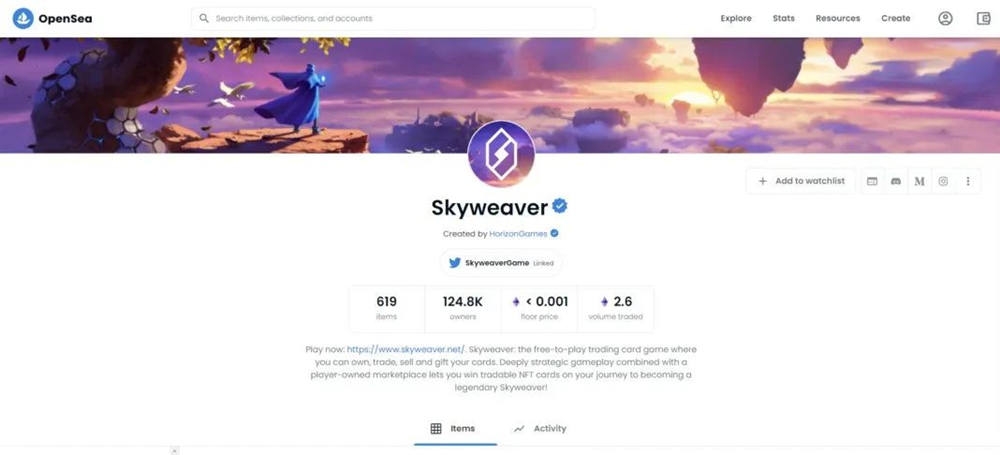
Registration steps
First go to the official website https://play.skyweaver.net/ Click "NEW ACCOUNT" to register your account, enter your email in the pop-up window, then click "Continue", then verify in your email, click "Confirm" After that, you can successfully log in with the Sequence wallet!
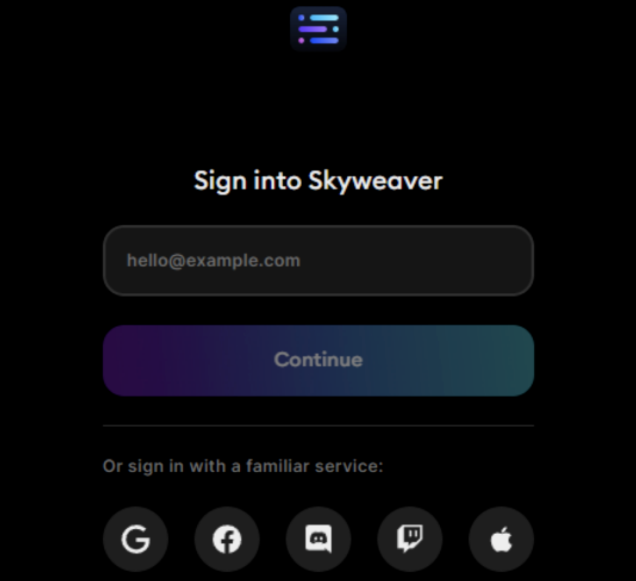
After being prompted to log in successfully, you can return to the original page to start playing the game~

The game has five modes:
Rank, Conquer, Practice, Private Games, Teaching
At the beginning, there will be four teaching levels to guide players to get started. We will not repeat them here, but directly introduce the game mechanics to help you get started faster!
introductory teaching
The goal of the game The goal of the game is to make the opponent's hero's blood drop to zero in the game, and then the player can win. (The value in the lower right corner of the hero in the game is the life value)
game mechanics
1. Heroes and traits: There are 15 heroes and 5 traits in the game. Each hero corresponds to a certain trait, and each trait corresponds to a certain card pool. There are five heroes with only one trait, such as our initial hero Ada. (Ada), is a power hero.
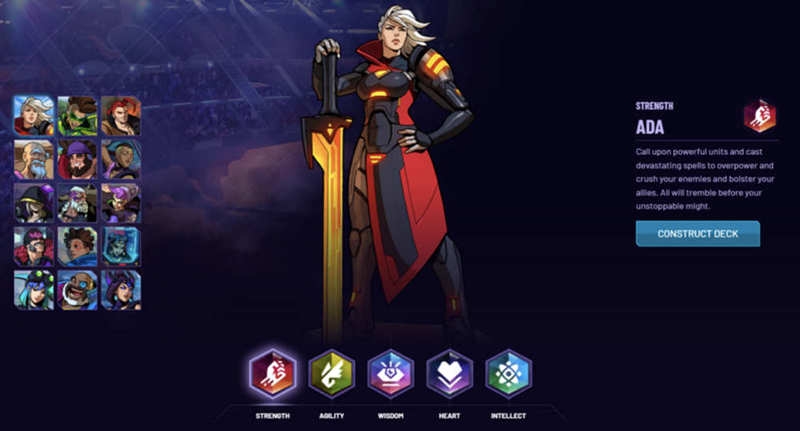
There are also ten heroes that are composite heroes, corresponding to two characteristics. For example, the third hero, Fox (or call him the old fox), is a composite hero with strength and agility.
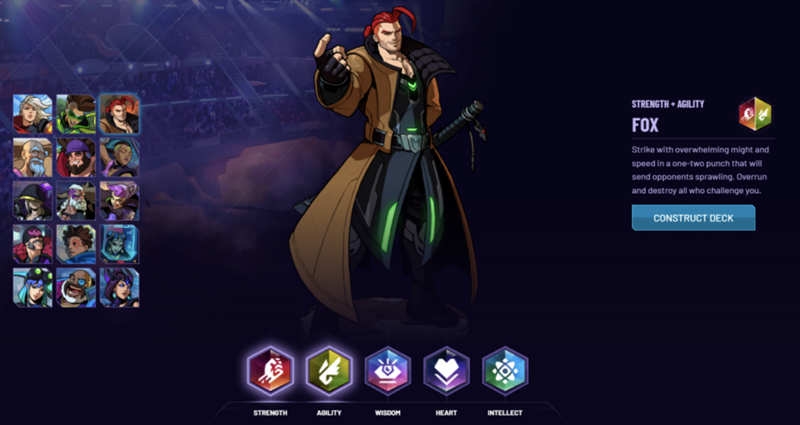
One thing that needs to be mentioned here is that due to the difference in the card pool, a single type of hero only has a deck cap of 25 cards, and a composite type hero has a deck cap of 30 cards.
Every time you complete a match in the game, you will get 20 basic experience points, and if you win, you will get 30 additional experience points. Leveling up requires 100 experience points, and each time you level up, you will get a random card.
Upgrading the Ranked Stage will directly gain 400 experience points, so try to strengthen your deck to win!
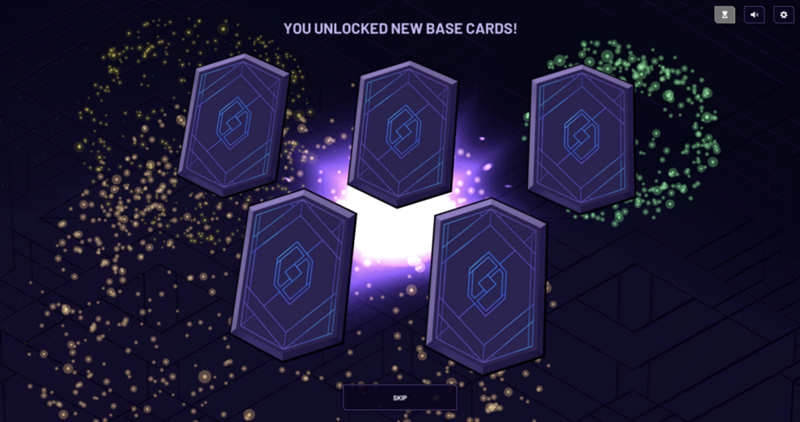
Because they are all random, you can choose your most suitable hero based on your expanding card collection, and build a deck based on the cards with the most unlocked traits.
2. Game Modes: Rank and Conquer
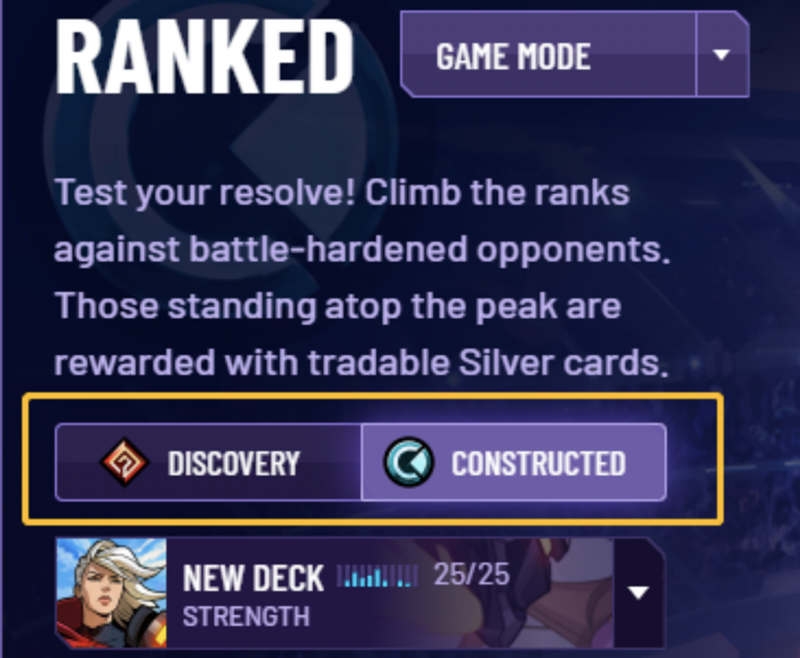
What needs to be introduced here is that there are two types of ranking matches, one is Discovery, which is a random deck match, and the other is Constructed, a ranking match where a deck is constructed. You can choose different modes to play rankings according to your preferences. Both rankings have the same reward mechanism.
The ranking is divided into five tiers, namely:
Apprentice, Scholar, Prophet, Master, Grandweaver

Reach the top 250 and get a silver card at the end of the season, and the silver card can be traded in the market to earn $USDC on the Polygon chain!

In another mode of the game - Conquest, you can get a gold card. To conquer, you need to buy a ticket to enter. One entry ticket costs 1.5USDC, or a silver card.
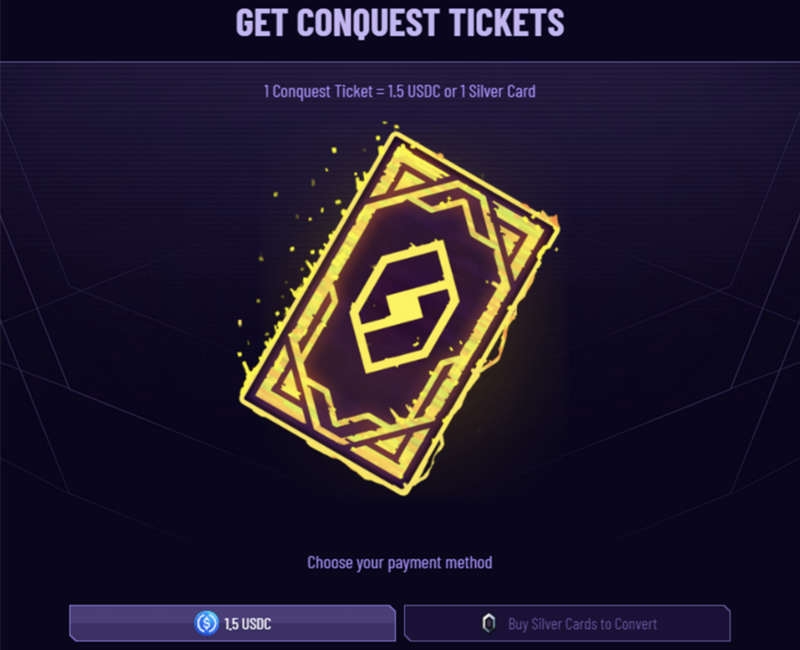
Depending on how much you win, you can get your corresponding reward.
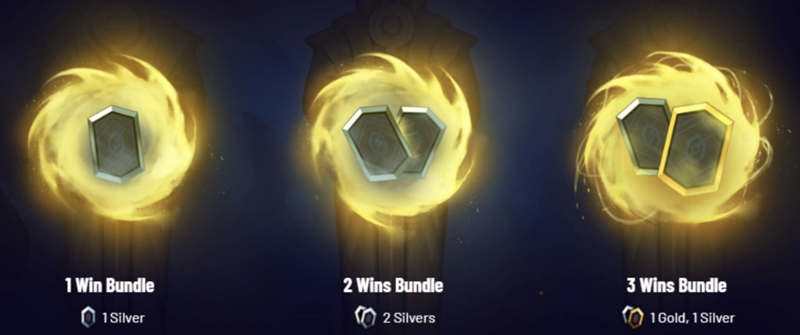
One win, one silver card, two wins, two silver cards, three wins, one gold and one silver, you only have one chance to lose.

After a total of three victories or one defeat, the game of conquest ends and you get your corresponding reward. (Failure on the first hand means no reward)
So, when you're ready, take part in the Conquest.
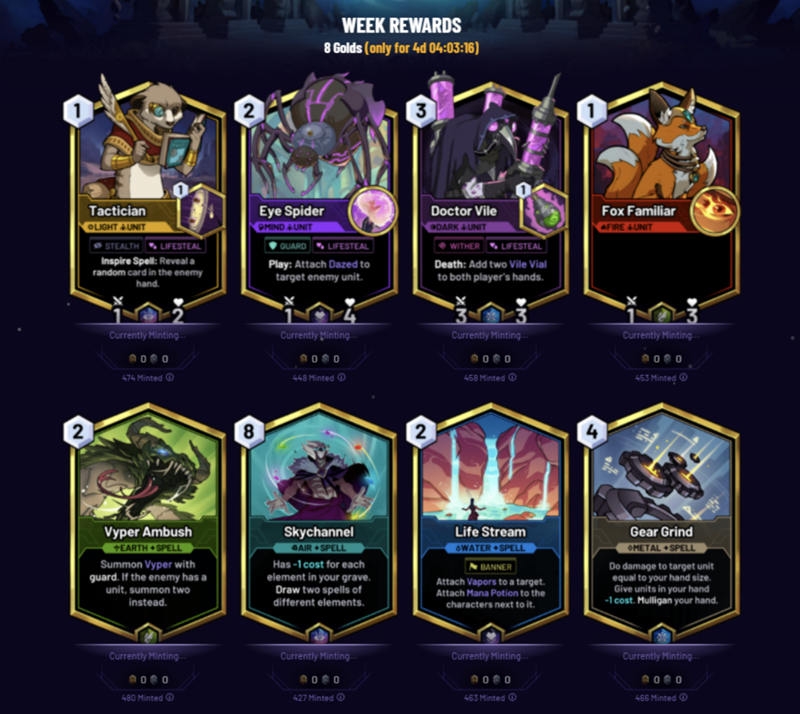
The weekly Conquest matches have corresponding gold card rewards, and these gold cards are only available to the first 500 players who have achieved three wins. After the one-week season ends, or the 510 limited-edition gold cards have all been minted (Mint), these cards will be out of print and will no longer be minted (Mint), the game's economic model is not live, but the gold The card is already of relatively high value, and capable friends can try to sprint for three wins~
Cards and Battles
There are four scene settings in the game: deck, hand, battlefield and cemetery. Cards will exist in these places: 1) The deck consists of 25 or 30 cards that have been pre-composed; 2) The cemetery consists of It is composed of cards that are used or defeated; 3) The cards on the battlefield are composed of creatures (or followers) summoned by oneself or the enemy and their corresponding buff cards; 4) The cards in the hand are composed of cards drawn or generated by oneself , up to nine cards. If a new hand is obtained when the hand is full, the new hand will automatically replace the corresponding number of cards in the earliest (that is, to the left of the most hand) into the card pool.
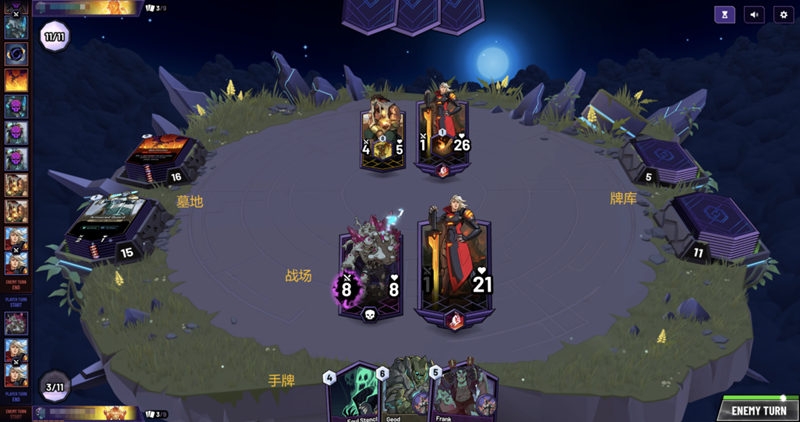
Click on your cemetery and card library to see what cards are in them, and you can view the specific effects of the cards.
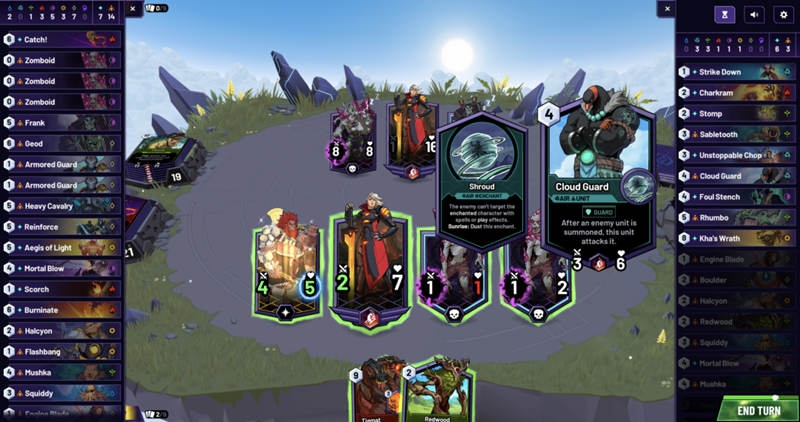
Cards are divided into biological cards and spell cards. There are eight types of cards, namely air, shadow, earth, fire, light, metal, thinking, and water.
Card effects are mainly divided into three parts: attributes, keywords and enchantments.
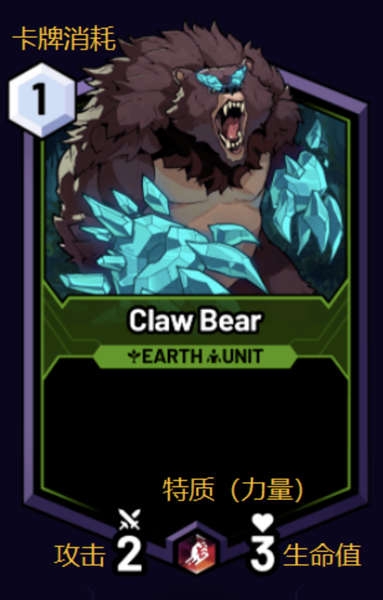
Take this "Crystal Claw Bear" as an example. Its consumption is one, its attack power is two, and its defense power is three. It does not have any keywords or enchantments. It is an ordinary earth attribute creature.
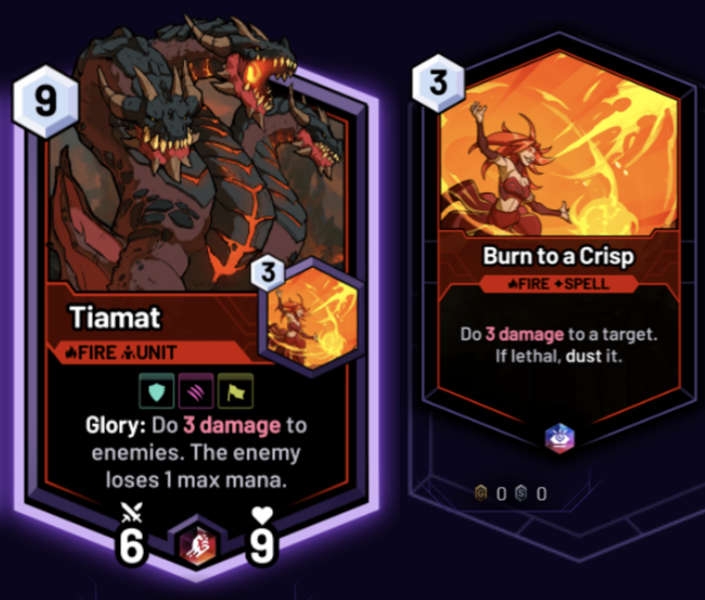
And this "Tiamat", which consumes up to nine mana, has Guard, Wither, Battle Flag, Glory, and an enchanted magic card called "Burning" for three mana, with the effect of "Causing three charges to a target. Do some damage, and if it causes a kill, smash it" (Note: smash is a card effect, which means that it is removed from the game without entering the graveyard, which means that you can no longer summon it from the graveyard or use it again). Ok, let's introduce these various effects~
First, the keyword
Armor: -1 damage taken from any source

Battle Banner: While this creature is in play, your hero gains +1 Attack

Guard: This unit's hero cannot be attacked (units with guards are on the far right by default)

Lifesteal: When this unit deals damage to a local hero, increase your hero's health by the same amount
Stealth: This unit cannot be attacked. If the corresponding hero is damaged, the stealth will be invalid in this round (the unit with stealth is on the far left by default)
Wither: Attacked units not only lose health, but also lose an equal amount of attack power
Second, trigger the effect
Death: Triggered on death
Glory: Triggered after damaging an enemy hero
Inspire Spell Spell Incentive: Triggered after casting a spell (Inspiration effect will also be linked with other effects, such as using battle flag cards, guard cards to trigger, etc.)
Play Use: Triggered when you play this card from your hand
Summon Summon: When this unit is summoned (whether from the deck, hand or graveyard)
Sunrise: Triggered at the start of a player's turn
3333; font-family: Arial, Helvetica, 'Microsoft Yahei'; background-color: #ffffff;"> Sunset: Triggered at the end of the player's turnFinally, some enchantments need to consume mana, and some don't, let's talk about the debuffs first.
Roots: 3 mana, enchanted units cannot attack
Flames: Sunrise: 2 mana, deals 2 damage to enchanted units (persistent, triggers at the beginning of each turn if removed without spending 2 mana)
Frostbite Frostbite: 4 mana, enchanted units take 2 additional damage from any source (also persists, costs 4 mana to remove)
Hex Voodoo: 6 mana, Sunset: Deal 6 damage to the enchanted unit, shatter this enchantment
Chains Chains: cannot be removed by mana consumption, keywords of enchanted units are invalid, such as ward, wither, battle flag, armor, etc.
But it can be topped or removed by other enchantments, such as this one-mana purification. When the chain is removed, the unit's keyword will take effect again.
Dazed Stun: One mana, Sunrise: Puts the enchanted unit to sleep (ie cannot attack, even if it is removed, it will have to wait for the next turn to attack)
Blind: 5 mana, the enchanted unit can only attack the rightmost enemy (usually the unit with taunt)
Silence: It cannot be removed by mana consumption, and the enchantment and some keywords of the enchanted unit are invalid (such as Deathrattle, Glory, Inspiration, etc., but the two keywords of battle flag and armor will not be invalid)
Next up are enchantments with buffs
Shield: Blocks one combat damage (i.e. damage from an attack) for the enchanted unit
Barrier Barrier: Blocks a non-combat damage, such as spell damage, for the enchanted unit
Shroud Shroud: Enemies cannot target this unit with mana or effects, Sunrise: Shatter this enchantment
Anima Health: 4 mana, when this enchantment is removed or shattered, give the enchanted unit +2/+2 (plus 2 points of attack and health, you can choose to spend 4 points of mana to actively remove, or use other Enchant it to top it off, you can also get +2/+2 effect)
Fate: Death: Draw a card with the same element as the enchanted unit
Lead Toughness: This enchantment cannot be removed or shattered, and the enchanted unit cannot be shattered. This is actually both a buff and a debuff, because while the opponent can't debuff the unit, you can't use the buff on the unit, but if the unit with toughness also has some keywords, such as ward , it will be a very reliable guard (because it cannot be silenced)
Fury: Glory: Draw a one-mana card that gives the enchanted unit +1/+1, smashing the enchantment
Vapors Vapor: Two mana, when this enchantment is removed or shattered, gives your hero +2 health and draws a card
Finally, there are some effects that are neither enchantments nor keywords that need to be introduced, such as card drawing:

Draw a card: Draw a card from your deck, if there is no corresponding card in your deck, your hero loses a point of health and generates a card (generated from outside the game, not from the library, graveyard, Hand cards are also not obtained from the battlefield).
Up-front strategy
Let’s first introduce the early stage strategy. If you just entered the pit and don’t want to pay for gold, you can play random mode to level 15 first, choose your favorite hero, and then keep playing this hero and level up until you get enough cards to build yourself. At this time, we can build our own deck! (Single attribute heroes need 25 cards, and compound attribute heroes need 30 cards)
card building strategy
After we have constructed a deck, we can click "STATS" in the upper right corner to see the curve formed by the cost of the cards in our deck.
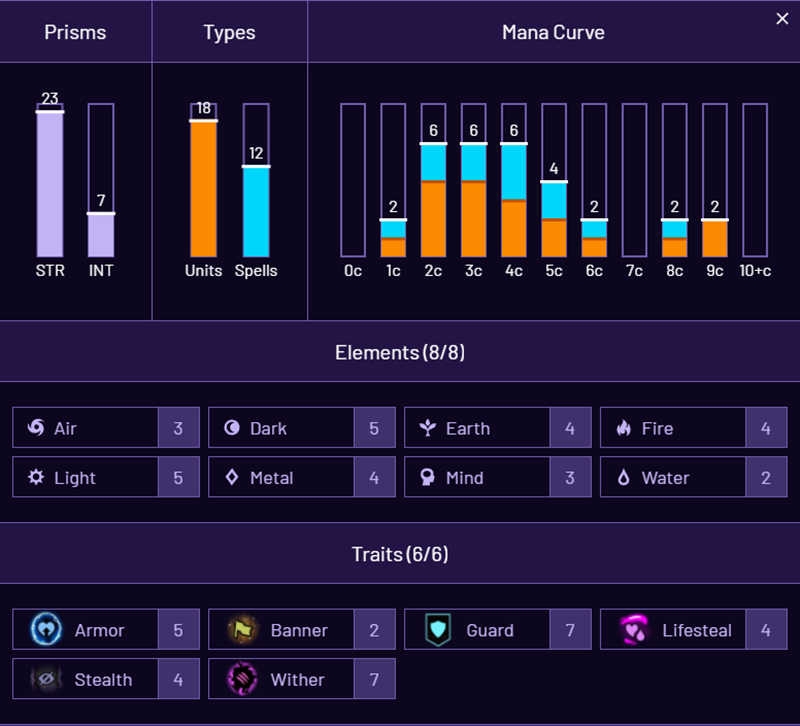
A good deck of cards should have a smoother curve, or be skewed to the left (that is, the average cost is lower). If you have a lot of high-cost cards, generally you won't be able to use these powerful cards. Was beaten to pieces by the opposite side.

Play to earn (optimize your deck and become stronger)
In the DECKS interface, click "Create Deck", you can use the deck code in the upper right corner to directly copy the master's deck, copy the code to the dialog box in the upper right corner, and then click "IMPORT DECK". The deck is not complete, and copying other people's decks will also have many missing cards. It is recommended to flexibly adjust your decks according to your own cards before the cards are enough. The current decks are mainly fast and mid-early stages, and they are slow. The card deck has less living space.
Here's a little trick for you, how to learn (Copy) the master's deck
First click on "RANKS" in the upper right corner, come to the leaderboard, click on the highest rank
Then find a random player and click on his homepage, select "MATCHES" at the bottom of the interface
You can see his game record, then click on the code below the deck to see what deck they are using:
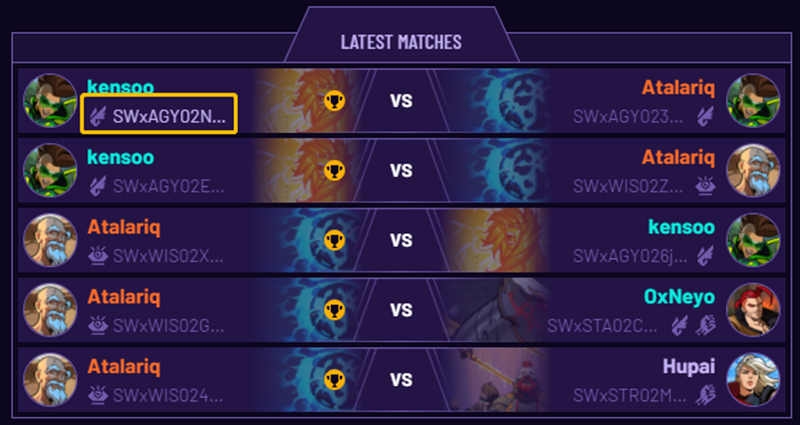
and also copy the code
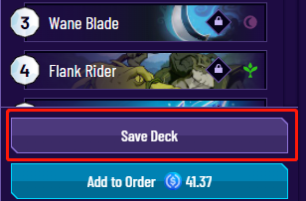
battle review
After each game, especially after a defeat, check the opponent's deck in the previous game, compare it with your own, and analyze the gap between yourself and your opponent after excluding the luck component, such as Is it because you have too few spell cards and cannot effectively clear the field when the opponent is full of creatures, or is it because the cost of your own cards is too high, and you are defeated by the opponent before you can use it.
We can click on the status bar just above to view our game records. Then slide down, and also click "MATCHES" to view your own and opponent's deck information.
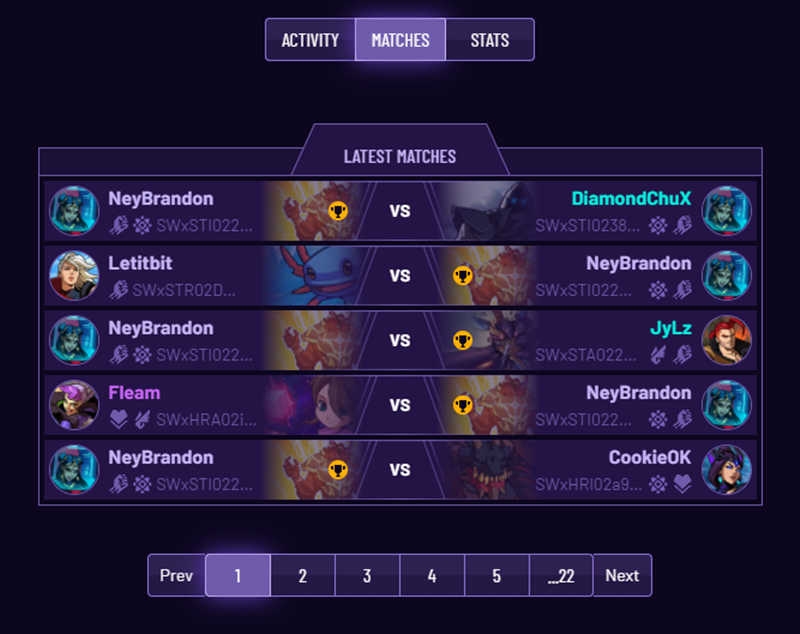
Battle strategy
1. In Skyweaver: Monsters attack each other, so when our creatures attack each other, our creatures will deduct blood accordingly. (Except for heroes, because heroes will lose attack power in the opponent's turn)
2. When you are at a disadvantage, try to use cards that can get instant benefits to save the situation. (Use, Battle Flag, Draw Cards, Damage Spell Cards, Sunset, Guard, etc.)





